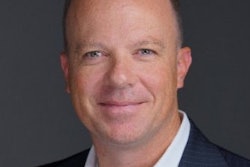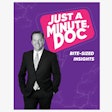
Dentistry is a business that survives on cash flow, much like any other business. Many dentists focus on gross production when they should focus on net collections.
If you are in a network with several dental insurance plans, it is crucial that you analyze whether the costs to do business outweigh the revenue received after adjustments. If you are insurance dependent, you rely on a third party to control much of your necessary cash flow. You therefore must have a reliable system to manage revenue recovery.
 Dr. James V. Anderson
Dr. James V. Anderson
What are the best billing practices to manage insurance revenue recovery? Below are 10 musts for your insurance payables cash flow.
- Your computer software’s updates must be performed whenever they are available. The ADA updates its Current Dental Terminology (CDT) codes with new codes (additions), deletions (removing codes that no longer are valid), and revisions (codes where the nomenclature or descriptors have been changed to meet the demands of newer clinical evidence).
- Your standard (usual, customary, and reasonable) fee schedule must be analyzed for raises yearly so that claims reflect your current fees, not the plan’s fees.
- You must check for rejected claims every day that claims are submitted to the clearinghouse. The rejected claims report shows which claims never made it to the insurance company because of data entry mistakes. These claims must be corrected immediately and resent.
- Your business team or insurance coordinator will spend approximately four hours daily checking insurance eligibility, benefits, and policy limitations, calling insurance plans, and appealing unpaid claims. The hours are necessary to ensure that patients are eligible for the proposed treatment plan and to receive information that will help you compile a treatment plan and estimate the costs.
- When you receive a denial from an insurer, you must appeal it twice. Most insurance plans have a second-level appeal process. Appealing can improve your chances of getting the claim paid by more than 50%. Many practices need more time or knowledgeable staff to appeal denied claims.
- It is vital that the dental practice follow up on every unpaid claim aged past 30 days for the following reasons:
- Cash flow is decreased.
- Patients are concerned that their insurance has not paid the claim.
- The claim needs attention because some element is missing.
- The insurer is requesting more information from you.
- Cash flow is decreased.
- Because of the time involved in processing a dental claim, many denied claims are not appealed by clinicians, so the balance is either written off or billed back to the patient. The patient usually disputes the charge, and your accounts receivable increase.
- Negotiating preferred provider organization (PPO) fees is essential to get the maximum allowable amount from the insurance company. This step is another time-consuming process that the dental office team often ignores.
- Practice morale suffers, and patients are neglected when the business team spends hours on the phone trying to get information from the dental insurer. You may find that your team spends more time talking to the insurance company than discussing the treatment plan with the patient. Because of the time and complexity of dealing with insurance companies, many practices have a designated person who handles insurance billing and follow-up.
- Learn how to create a "clean claim" for every submitted claim from your office. A clean claim is filled out correctly, submitted successfully, and paid within 15 days. The patient data have been entered on the claim accurately. The patient's eligibility has been verified. The claim has been submitted electronically to the correct clearinghouse. The valid payer ID has been confirmed, and the national provider identifier reflecting the provider of services has been verified. Clean claims are not denied.
The following is a typical scenario of a denied claim.
Scenario: A new patient with evidence of periodontal disease wants a cleaning and examination at a new dentist's office. He has a PPO policy, and the practice is in network.
After the visit, the encounter is posted as follows:
- Code D0180 (comprehensive periodontal evaluation -- new or established patient)
- Code D0210 (intraoral-comprehensive series of radiographic images)
- Code D4910 (periodontal maintenance)
The practice attached radiographs and a six-point periodontal chart to the claim as evidence of the periodontal condition. The plan partially denied the claim because the practice did not provide a "history" of the periodontal therapy/scaling and root planing that would have qualified the patient for the periodontal maintenance procedure. The radiographs were also denied because they exceeded the plan's frequency limitations.
The patient had a complete series of x-rays taken at his previous dentist less than three years ago. The payment was made for the bitewings, which met the frequency limitation. If the practice had performed an insurance verification of the plan, the benefits, limitations, and history would have been discovered.
To appeal the decision, the practice has to contact the previous dental provider or the dental plan for periodontal therapy/scaling and root planing dates and radiographs, whichever is more accessible. This time-consuming process, multiplied by more denied claims, results in higher accounts receivable and limited cash flow.
The best practice for insurance billing and patient billing is consistency. The time, care, and diligence your dental billing team spends in submitting clean claims and following through on submitted claims have a concrete, substantial return on investment for your practice, or it costs your practice more than is necessary. Outsourcing dental insurance billing and patient billing has increased for several years for clinicians. It has proven to be a viable solution to the billing and follow-up that is necessary for practices to maintain a stable cash flow.
Dr. James V. Anderson is a practicing dentist in Syracuse, UT, and is the CEO and founder of eAssist Dental Solutions. He can be reached via email.
The comments and observations expressed herein do not necessarily reflect the opinions of DrBicuspid.com, nor should they be construed as an endorsement or admonishment of any particular idea, vendor, or organization.



















